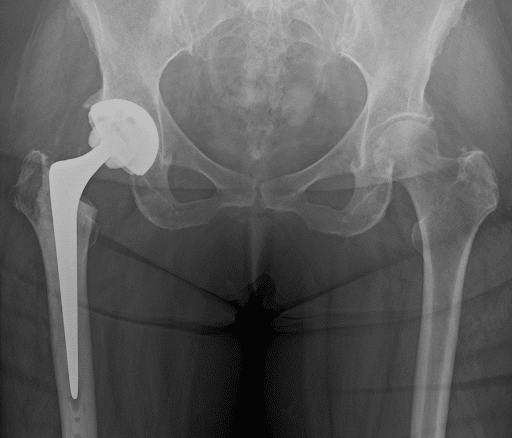Arthritis is a term used by doctors to describe degeneration(wear/damage) within a joint. Osteoarthritis is the most common form of joint disease. When this degeneration affects the hip joint, the surfaces within your joints become damaged so the joint does not move as smoothly as it should. It causes joint pain and stiffness. Treatment ranges from conservative means such as lifestyle changes to hip joint injection or replacement
Hip replacement is a surgical procedure in which the hip joint is removed and replaced by an artificial metal implant. This is essentially the surgical reconstruction or replacement of an arthritic joint. Hip and knee replacements are the most common major orthopaedic procedures. The goals are to restore function and relieve hip pain. Hip replacement has been hailed as the operation of the century because of the excellent pain relief and significant improvement in mobility giving a new lease of life for the patients.
Indication for Hip Replacement
If you are suffering from hip pain and suffer with symptoms including groin pain, difficulty in getting in and out of cars/bath, tying the shoelaces, then probably you are suffering from Hip arthritis. You can consult your GP who may refer you to an orthopaedic consultant for an initial consultation. Following consultation and pre-operative screening, if you are indeed suffering from hip arthritis who will benefit from hip replacement, you will be set a date to come into hospital as an inpatient for hip replacement surgery
How hip surgery works
The hip replacement surgery involves replacing the worn or damaged sections of the hip with an artificial hip joint. The surgery will be carried out either under general or spinal anaesthetic. The duration of the surgery is usually between 60-90 minutes. With our enhanced recovery pathway patients can return home any time from the day of surgery to two to three days after the surgery
Benefits of having a hip operation or treatment
How quickly you return to your normal activities will vary from person to person, but with good physiotherapy and a planned approach to recovery you should quite quickly notice that everyday tasks become much easier. Whilst quality of life may have dipped pre-surgery, tasks like tying shoelaces, getting in and out of the car or bath, walking or standing, will improve. It is rewarding to see that most patients will be able to resume their hobbies such as golf or gardening with ease within a few months after hip replacement.
Front View of a Hip replacement
Benefits of having a hip operation or treatment
How quickly you return to your normal activities will vary from person to person, but with good physiotherapy and a planned approach to recovery you should quite quickly notice that everyday tasks become much easier. Whilst quality of life may have dipped pre-surgery, tasks like tying shoelaces, getting in and out of the car or bath, walking or standing, will improve. It is rewarding to see that most patients will be able to resume their hobbies such as golf or gardening with ease within a few months after hip replacement.
Hip surgery recovery and aftercare
Mr. Ellapparadja practices the Enhanced Recovery Pathway (ERP) which is a modern, evidence-based approach that helps shorten recovery time after major surgery. Length of stay in hospital can be significantly shorter as a result of ERP, with patients able to return home any time from the day of surgery to two to three days post operatively. This is strongly influenced by his learning of this practice during his training in the Golden Jubilee Hospital in Glasgow which was the pioneer hospital of ERP practice in UK.
ERP will enable you to get up and be on your feet within a few hours of surgery with aid from physiotherapists. This early mobilisation and a return home reduces the risk of deep vein thrombosis and infections, as well as making patients feel more comfortable.
Your physical therapist will give you exercises and instructions on how to use mobility aids such as crutches and sticks. For the first four to six weeks, you will need crutches or sticks to get around and you will need to do your exercises to ensure your new hip joint gives you the best results. Return to normal activities. It is up to individuals to do the physical therapy to make sure that the hip gets strong and has a full range of movement.

